Choosing the right first car for a teen driver is a task filled with challenges, concerns, and careful considerations. For many families, the arrival of a new driver means more than just handing over the keys; it represents a significant financial investment and a responsibility to ensure their teenager’s safety on the road.
The realities of teenage driving—marked by inexperience, occasional recklessness, and the natural learning curve—place enormous stress on any vehicle. These stresses can quickly reveal which cars are built to last and which models might crumble under the strain. This article aims to shed light on a critical but often overlooked aspect of vehicle ownership for new drivers: the durability and survivability of sedans under teen driving conditions.
Teen drivers are notorious for pushing vehicles in ways that seasoned drivers do not. The abrupt accelerations, harsh braking, occasional minor collisions, and general lack of finesse can rapidly accelerate wear and tear on a car. Additionally, teenagers may not have fully developed a sense of responsibility or appreciation for maintenance schedules, making neglect a common issue.
When paired with the stress of new driving habits, this cocktail of factors can quickly degrade a vehicle’s mechanical integrity and overall condition. Therefore, selecting a sedan that can withstand these rigors without frequent breakdowns or costly repairs is paramount. While factors such as safety features and insurance costs are critical, durability under stress is often the unsung hero in deciding a vehicle’s suitability for a teen.
The landscape of sedans available today is vast and varied, with each model offering a different combination of style, performance, safety, and reliability. Some sedans are engineered with robust components and thoughtful design features that inherently endure the unpredictability and rough treatment of teen drivers.
Others, while appealing on paper or budget-wise, fall short when exposed to the real-world challenges that come with new drivers behind the wheel. This variance makes it essential for parents and guardians to delve beyond just initial purchase price or aesthetic appeal and consider the car’s ability to survive and thrive during its time in a teen’s hands.
Understanding the mechanical reliability and interior durability of a sedan helps families avoid frequent trips to the mechanic and reduces the risk of sudden breakdowns. It also means a safer environment for the new driver, as vehicles that maintain their integrity are less likely to experience failures that could lead to accidents. Alongside these benefits, durability often correlates with better resale value, an important factor for parents who view their teen’s first car as a stepping stone rather than a permanent fixture.
Throughout this article, we explore two distinct groups of sedans. The first group comprises five models renowned for their ability to endure the challenges posed by teen drivers. These vehicles have earned their stripes through a combination of sturdy engineering, reliable powertrains, high-quality interiors, and effective safety technologies. They offer peace of mind to families by resisting damage and mechanical failure even when subjected to less-than-ideal driving behavior.
Conversely, the second group features five sedans that tend to fall apart under the pressures exerted by teen ownership. These models suffer from known issues ranging from poor build quality and fragile interiors to mechanical and electrical failures.
They often come with higher maintenance costs and lower reliability ratings, making them less ideal choices for young drivers still honing their skills. Highlighting these vehicles allows families to avoid common pitfalls and steer clear of cars that may become financial and safety liabilities.
By understanding which sedans survive and which falter under the stresses of teenage driving, families can make informed decisions that protect both their investment and their loved ones. Selecting a car that balances affordability, durability, safety, and ease of maintenance can significantly ease the anxiety often associated with a teen’s first driving experience. More than just a mode of transportation, the right sedan can become a dependable partner in teaching a new driver the importance of responsibility, safety, and care on the road.
In the following sections, we delve deeply into the specifics of these ten sedans, breaking down what makes some models resilient and others prone to premature deterioration. Whether you prioritize a vehicle’s rugged mechanical foundation, safety technology, or interior durability, this guide equips you with the knowledge needed to pick a sedan that will truly survive the unpredictable journey of teen driving.
Also Read: 5 Toyota Hybrids With Long Lives and 5 That Constantly Glitch
5 Sedans That Survive Teen Drivers
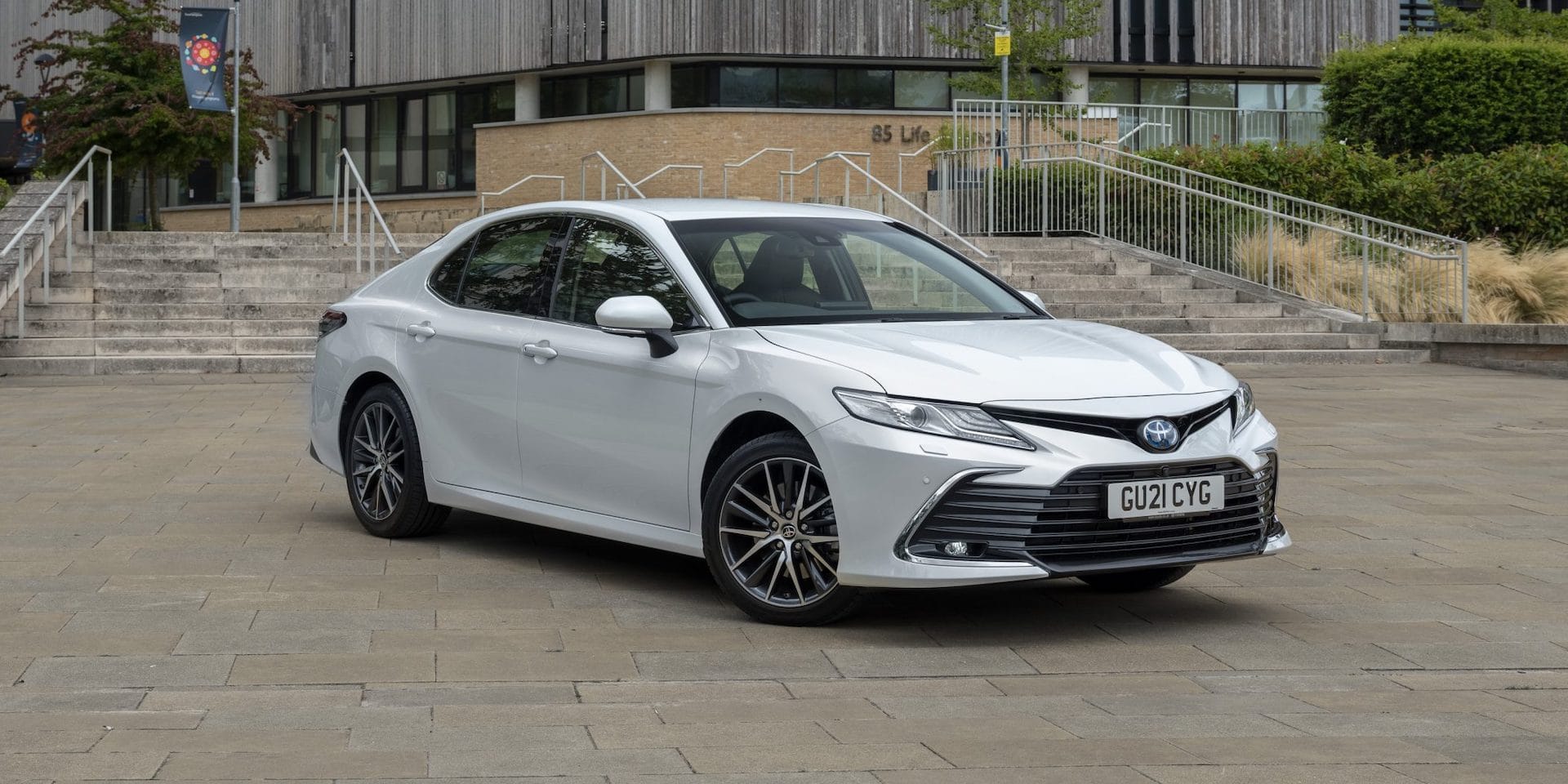
1. Toyota Camry
The Toyota Camry stands as a towering figure in the world of sedans, widely regarded as the benchmark for reliability and durability, which makes it an excellent choice for teen drivers. Its longstanding reputation is not a mere accident but the result of decades of engineering focused on building a car that can withstand high mileage and the stresses of everyday driving with minimal issues. One of the key reasons the Camry endures so well under teenage hands is its powertrain’s proven track record. The engines, whether four-cylinder or V6, have been tested through countless miles and scenarios, showing remarkable resistance to wear and breakdown. This reliability translates to fewer unexpected repairs, which is critical for families managing the added costs of a new driver.
Beyond its mechanical robustness, the Camry also boasts an interior designed with practicality in mind. It employs high-quality materials that resist scratches, stains, and general abuse—common occurrences with teen drivers who may not always be careful with their vehicles. The seats, door panels, and dashboard hold up well even when a teen slams a door a bit too hard or spills a soda in the backseat. Moreover, Toyota’s reputation for producing affordable replacement parts and widespread availability of service centers adds another layer of convenience and cost efficiency. The car’s safety suite, Toyota Safety Sense, which includes adaptive cruise control, lane departure alerts, and automatic emergency braking, acts as a guardian angel, preventing many accidents before they happen and helping the car stay intact through the learning phase of new drivers.
The driving dynamics of the Camry also contribute significantly to its survival rate among teens. It offers a balanced mix of power and predictability, providing enough responsiveness to keep the driving experience engaging but not so much that it encourages risky behavior. The braking system is solid and offers good feedback, helping new drivers develop safe habits. Its fuel economy remains competitive, keeping operating costs down, which is a huge plus for young drivers who might otherwise strain budgets. Taken together, the Camry’s combination of rugged mechanical design, forgiving safety features, and durable interior make it a sedan that can confidently carry teens through their formative driving years without falling apart.
Finally, the resale value of the Toyota Camry cannot be overlooked when evaluating its suitability for teen drivers. Because the Camry maintains its value so well, it provides families with an option that not only survives the teen years but also makes financial sense in the long run. Parents can feel assured that their investment won’t depreciate into near-worthlessness after just a few years of teenage ownership. This blend of reliability, safety, durability, and financial prudence cements the Camry’s place as a top contender for anyone searching for a sedan that truly survives the rigors of teen driving.
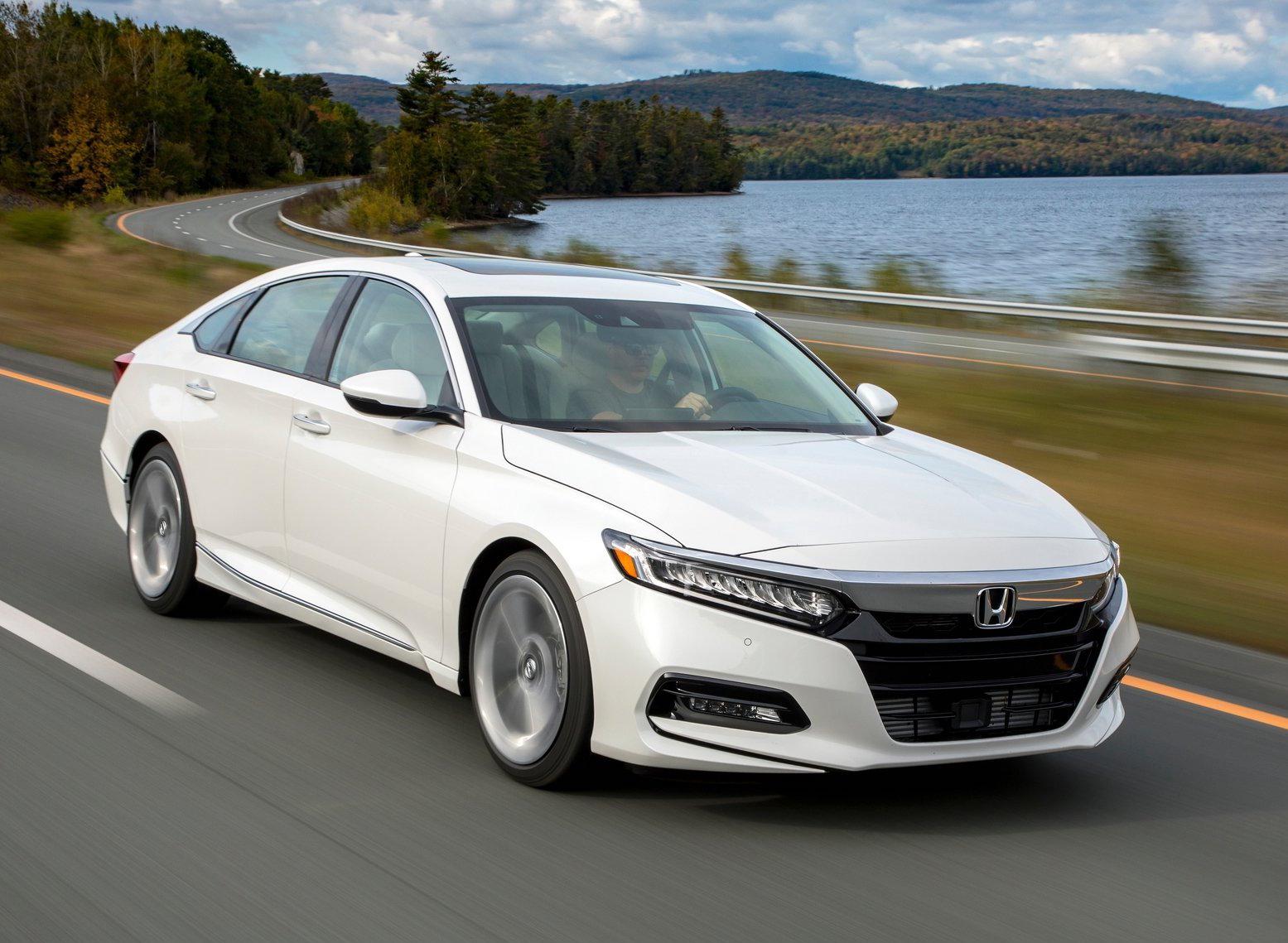
2. Honda Accord
Much like the Camry, the Honda Accord is a stalwart in the midsize sedan market, renowned for its ability to endure the trials of teen driving while delivering a satisfying driving experience. Honda’s engineering philosophy emphasizes reliability and driver engagement, which uniquely positions the Accord as a vehicle that helps teens build essential driving skills while offering a robust platform that withstands rough handling. The Accord’s engine options—ranging from efficient four-cylinders to powerful turbocharged variants—are built with durability in mind. These powertrains can handle the stop-and-go city traffic and highway cruising alike without succumbing to frequent repairs or mechanical breakdowns, even when driven by inexperienced hands.
The interior of the Accord offers a blend of comfort, space, and toughness that parents appreciate. It uses materials that hold up well against the bumps, spills, and careless treatment often seen in teen-driven vehicles. The cabin layout is thoughtfully designed for intuitive use, which reduces distractions for new drivers who are still mastering vehicle controls. Safety plays a central role in the Accord’s appeal; Honda Sensing, the brand’s suite of advanced driver-assistance features, provides adaptive cruise control, collision mitigation braking, and lane-keeping assist. These technologies not only improve the safety of teen drivers but also act as a buffer that protects the car from damage by reducing the likelihood of accidents.
Handling and ride quality are other crucial elements that make the Accord a durable choice for teens. It strikes a fine balance between sporty dynamics and ride comfort, making it easier for novice drivers to maintain control and build confidence behind the wheel. The suspension is tuned to absorb minor road imperfections without wearing out prematurely under the more aggressive driving styles common among teens. Furthermore, insurance companies tend to favor the Accord due to its strong safety record and reliability, which can translate into lower insurance premiums for young drivers—a practical advantage for families. Overall, the Accord’s combination of mechanical strength, safety technology, and driving enjoyment make it a sedan that consistently survives the growing pains of teen drivers.
Moreover, the Honda Accord benefits from a wide service network and relatively affordable maintenance costs, which are essential considerations when managing a teen’s vehicle. Parts are generally accessible, and many mechanics are well-versed in Honda’s design, allowing for quicker and less expensive repairs when needed. This ease of upkeep is critical in a vehicle driven by a teenager, where minor mishaps or routine wear might otherwise escalate into expensive issues. By providing a durable, safe, and affordable vehicle option, the Honda Accord remains a favorite among parents and teens alike for surviving the unique challenges of teenage driving.
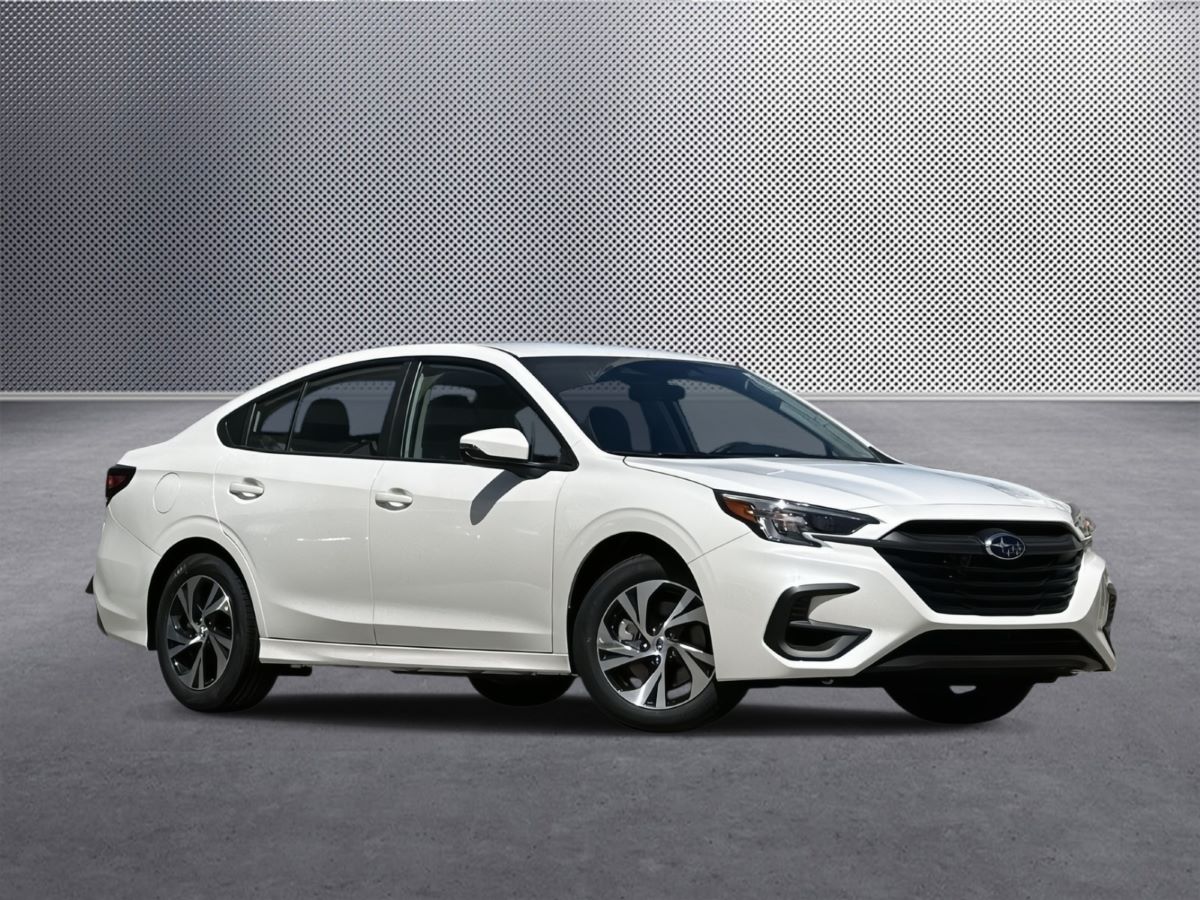
3. Subaru Legacy
The Subaru Legacy is distinguished by its standard all-wheel-drive system, a feature that significantly contributes to its durability and safety, especially for teen drivers navigating diverse weather and road conditions. Unlike many sedans that offer all-wheel drive only as an option, the Legacy includes it as standard, giving teens the added confidence and control needed to tackle rain, snow, and icy roads. This enhanced traction reduces the risk of accidents, thus decreasing the likelihood of damage to the vehicle and preserving its longevity despite the bumps and scrapes that often come with inexperienced driving.
From a build perspective, the Legacy is constructed with a ruggedness that supports its outdoorsy image. The chassis and suspension are engineered to absorb shocks and handle minor impacts better than many front-wheel-drive competitors. The interior is thoughtfully designed with materials that are both comfortable and durable, standing up well to the wear and tear common among teen drivers. For families living in regions with harsh climates, the Legacy’s ability to maintain stability and safety in difficult conditions makes it a valuable asset. Furthermore, Subaru’s reputation for reliability, supported by consistent safety awards and high owner satisfaction, speaks volumes about the Legacy’s capability to endure rough handling.
The Legacy’s safety technology further enhances its appeal as a teen driver vehicle. Subaru’s EyeSight system, which includes adaptive cruise control, pre-collision braking, and lane departure warning, actively helps prevent accidents that might otherwise cause significant damage. For teens who are still learning hazard perception and reaction skills, these systems act as a safety net, reducing the car’s exposure to costly repairs and keeping the vehicle intact longer. The Legacy also delivers respectable fuel efficiency for an all-wheel-drive sedan, easing the cost of ownership.
Driving the Legacy is generally a forgiving experience, with smooth power delivery and a well-balanced chassis that promotes confidence without overwhelming novice drivers. Its rugged engineering and smart safety features combine to create a sedan that not only survives teen drivers but supports them in becoming safer, more competent motorists. The Subaru Legacy is an especially strong candidate for families in climates where extra grip and stability are crucial, making it one of the most resilient sedans on the market for new drivers.

4. Hyundai Sonata
In recent years, the Hyundai Sonata has undergone a remarkable transformation, shaking off its earlier reputation for lackluster quality and emerging as a reliable, feature-packed sedan well-suited for teen drivers. Hyundai’s commitment to improving build quality, combined with a competitive warranty program, makes the Sonata an appealing option for families wary of repair costs associated with inexperienced drivers. The Sonata’s interior now boasts modern materials that are more durable and stain-resistant, designed to endure the inevitable rough treatment teens subject vehicles to, such as accidental spills, scuffed surfaces, and constant use.
The Sonata also impresses with its extensive safety features, which in many models include forward collision-avoidance assist, blind-spot detection, and driver attention warning. These technologies serve as an extra layer of defense that reduces the likelihood of accidents, thereby protecting the car’s condition over time. Hyundai’s advancements in engine technology have also led to more efficient and smoother powertrains that hold up well under mixed driving conditions. The Sonata offers a comfortable, quiet ride that is forgiving to novice drivers, encouraging safer driving habits through stability and ease of handling.
One of the Sonata’s standout features for parents is its industry-leading warranty coverage, often extending up to 10 years or 100,000 miles. This warranty acts as a significant financial cushion, reassuring families that repairs caused by the unpredictability of teen driving won’t break the bank. The maintenance costs of the Sonata are generally lower than many competitors, and parts are widely available. Its fuel efficiency is also competitive, which means less strain on family budgets for gas. Taken together, the Hyundai Sonata’s strong warranty, improved durability, and comprehensive safety technology make it a sedan that can genuinely survive the trials of teenage driving, providing peace of mind to parents.
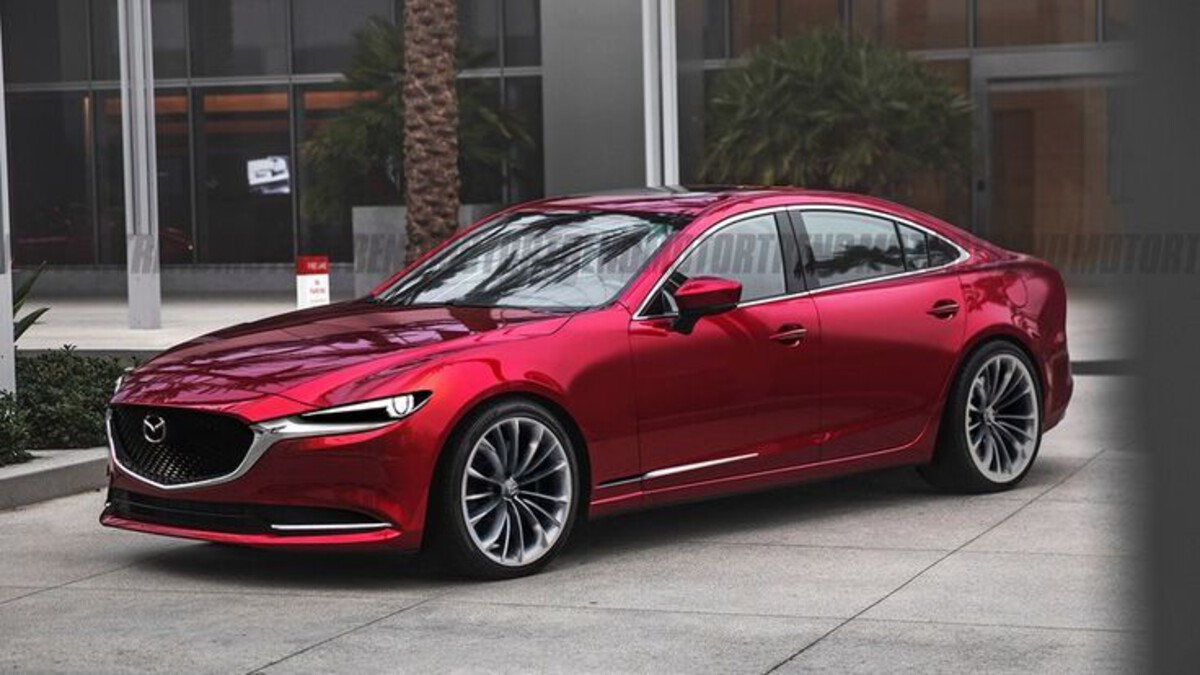
5. Mazda6
The Mazda6 offers a unique blend of sporty styling, engaging driving dynamics, and commendable durability, positioning it as a standout sedan that withstands the pressures of teen drivers with ease. Mazda’s design philosophy emphasizes “fun to drive” without compromising on reliability, making the Mazda6 an ideal vehicle for teens who want a bit of excitement in their driving experience while still needing a dependable car. The engines and transmissions are built with longevity in mind, supported by maintenance schedules that, when followed, keep the car running smoothly for many years.
Inside, the Mazda6 features high-quality materials that resist fading, staining, and damage from frequent use. The seats, door panels, and controls are designed to withstand the rigors of daily use, even when handled roughly. The cabin also boasts an intuitive layout that minimizes distraction, a key consideration for teen drivers who are still mastering multitasking on the road. Mazda’s i-Activsense safety suite equips the Mazda6 with adaptive cruise control, blind-spot monitoring, and lane-keeping assist, helping to prevent accidents and reduce wear on the vehicle caused by collisions or hard driving.
Handling is where the Mazda6 truly shines, with sharp steering, a composed suspension, and responsive brakes that encourage better driving habits. These features help teens develop essential skills such as smooth cornering and controlled braking, which are critical for vehicle longevity and safety. Fuel economy is solid for the segment, adding another layer of cost efficiency. Insurance rates for the Mazda6 are generally reasonable, which helps keep the overall cost of ownership down. For families seeking a sedan that combines spirited driving with resilience, the Mazda6 stands out as a car that can not only survive but thrive through the challenges of teen driving.
5 Sedans That Fall Apart Under Stress from Teen Drivers
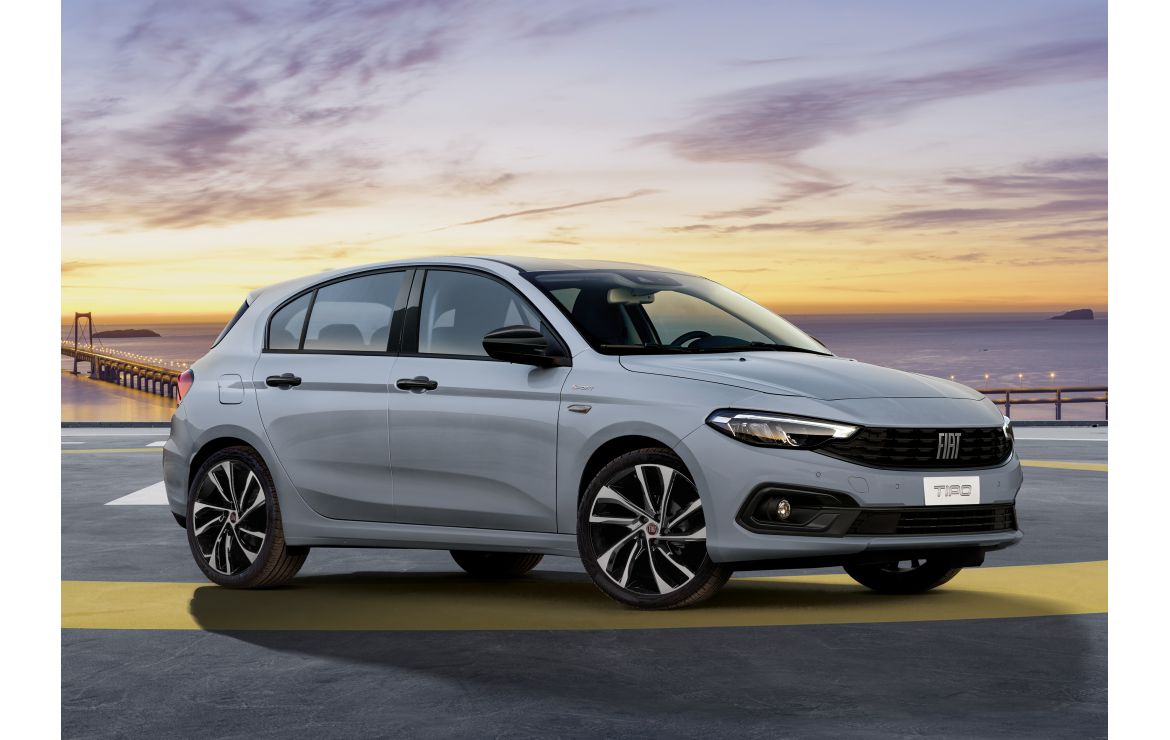
1. Fiat Tipo
The Fiat Tipo, despite its initial appeal as an affordable and stylish sedan, unfortunately earns a poor reputation for durability, especially when placed under the unpredictable stress of teen drivers. The Tipo’s build quality has been a frequent subject of criticism, with many owners reporting that the interior feels cheap and fragile right from the start.
Plastics scratch easily, trim pieces loosen over time, and the upholstery shows signs of wear much sooner than what is typical for its class. For a teen driver, whose care for a car can often be uneven at best, these vulnerabilities translate into a rapidly deteriorating interior that can become unpleasant and costly to repair. More than aesthetics, this poor build quality hints at deeper mechanical fragilities that further compromise the vehicle’s ability to withstand rough usage.
Mechanically, the Tipo is less robust than many of its competitors, particularly when subjected to the abrupt accelerations, sharp braking, and occasional careless handling common among new drivers. Suspension components designed with comfort rather than durability in mind can wear out prematurely, leading to a bouncy or unstable ride that worsens as parts degrade.
This not only affects the vehicle’s safety and drivability but also increases the likelihood of expensive suspension repairs. Furthermore, the Fiat’s engine and transmission systems have been known to develop issues sooner than expected, with some models experiencing electronic glitches and sensor failures that add to repair headaches.
In addition to physical durability issues, the Tipo’s safety offerings are limited compared to more modern competitors. While it includes basic airbags and ABS, it lacks many of the advanced driver-assist systems that help prevent accidents and preserve the vehicle’s condition. For teens still learning safe driving habits, this absence can result in more frequent collisions or mishaps that compound the car’s fragility.
Repairs on Fiat vehicles often come at a premium, partly due to less common parts availability and specialized labor requirements, making maintenance costly and inconvenient. Taken together, the Fiat Tipo’s combination of cheap materials, mechanical vulnerabilities, and limited safety features make it ill-suited to handle the tough demands placed on vehicles driven by teenagers.
2. Chrysler 200
The Chrysler 200 is widely regarded as a sedan that struggles to maintain reliability under normal circumstances, and these issues become dramatically more pronounced when the vehicle is entrusted to the often erratic hands of teen drivers. A history of transmission failures, particularly with the automatic variants, has plagued many Chrysler 200 models, resulting in jerky shifts, hesitation, and in some cases, total transmission breakdowns.
For new drivers who may unintentionally put extra strain on the transmission through hard starts, abrupt stops, or failure to anticipate traffic conditions, these mechanical weaknesses are amplified, often leading to costly repairs much sooner than expected.
Aside from drivetrain problems, the Chrysler 200’s electrical system has earned a poor reputation for inconsistency. Owners frequently report glitches such as malfunctioning infotainment systems, flickering dashboard lights, and erratic sensor readings, which not only distract young drivers but also indicate underlying reliability concerns.
The interior materials compound these issues, as they tend to degrade quickly under the stress of daily use, something exacerbated by the rougher handling and occasional carelessness typical of teen drivers. Worn-out seat fabric, loose door panels, and rattling trim diminish the vehicle’s overall feel and comfort, creating a less enjoyable and more frustrating driving experience.
Despite including a reasonable suite of safety features, the Chrysler 200’s tendency toward mechanical and electrical failure undermines its capacity to withstand the pressure of novice drivers. Repairs are often expensive, partly because Chrysler parts and specialized service technicians are less widespread than those for mainstream Japanese or Korean brands.
Insurance premiums may also be higher due to the car’s history of reliability issues, further burdening families. When all factors are considered, the Chrysler 200 emerges as a sedan that tends to fall apart under the stress of teen drivers, leaving families to grapple with frequent breakdowns and a vehicle that rapidly loses its value and appeal.
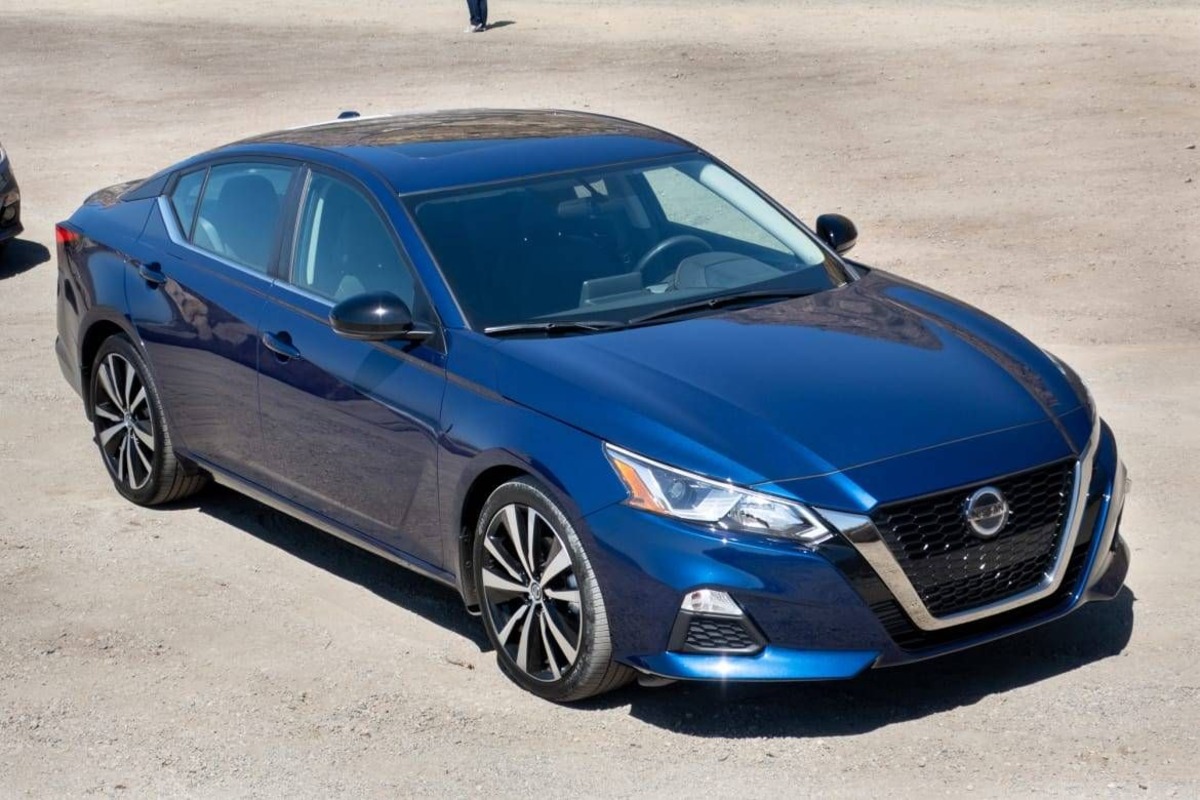
3. Nissan Altima (Older Models)
While the Nissan Altima enjoys popularity as a midsize sedan, older models—especially those produced in the early 2010s—have developed a reputation for reliability problems that make them risky choices for teen drivers. The most notable concern is the continuously variable transmission (CVT), which in many of these models has shown a propensity for premature wear and failure.
The CVT’s sensitivity to driving style means that aggressive acceleration, frequent stop-and-go traffic, and neglect of regular maintenance—common behaviors among teen drivers—can quickly lead to costly transmission repairs or replacements. This mechanical vulnerability severely undermines the Altima’s ability to endure the erratic driving patterns typical of novices.
Compounding the transmission issues, the older Altima models are also prone to suspension and steering problems that worsen under the increased physical demands of teenage driving. The ride quality, while smooth initially, can degrade quickly when the vehicle is subjected to hard braking, sharp turns, and rough road conditions.
These stresses can cause premature wear on bushings, struts, and steering components, which not only increases maintenance expenses but also impacts vehicle safety and driver confidence. Additionally, the interior materials in these older models have a tendency to age poorly. Drivers and passengers may experience cracked dashboards, peeling trim, and seat fabric that wears thin or tears, especially when the vehicle is treated with less care, something many teen drivers inadvertently do.
Although Nissan equipped these models with standard safety features for their time, the lack of more advanced driver assistance technologies limits their ability to help teens avoid accidents and reduce vehicle damage.
Combined with the mechanical weaknesses, this results in a sedan that often falls apart faster than expected when placed under the stress of teenage ownership. Families considering an older Altima should weigh the risk of ongoing repair costs and reliability issues, which can quickly overshadow the model’s initial affordability and styling.
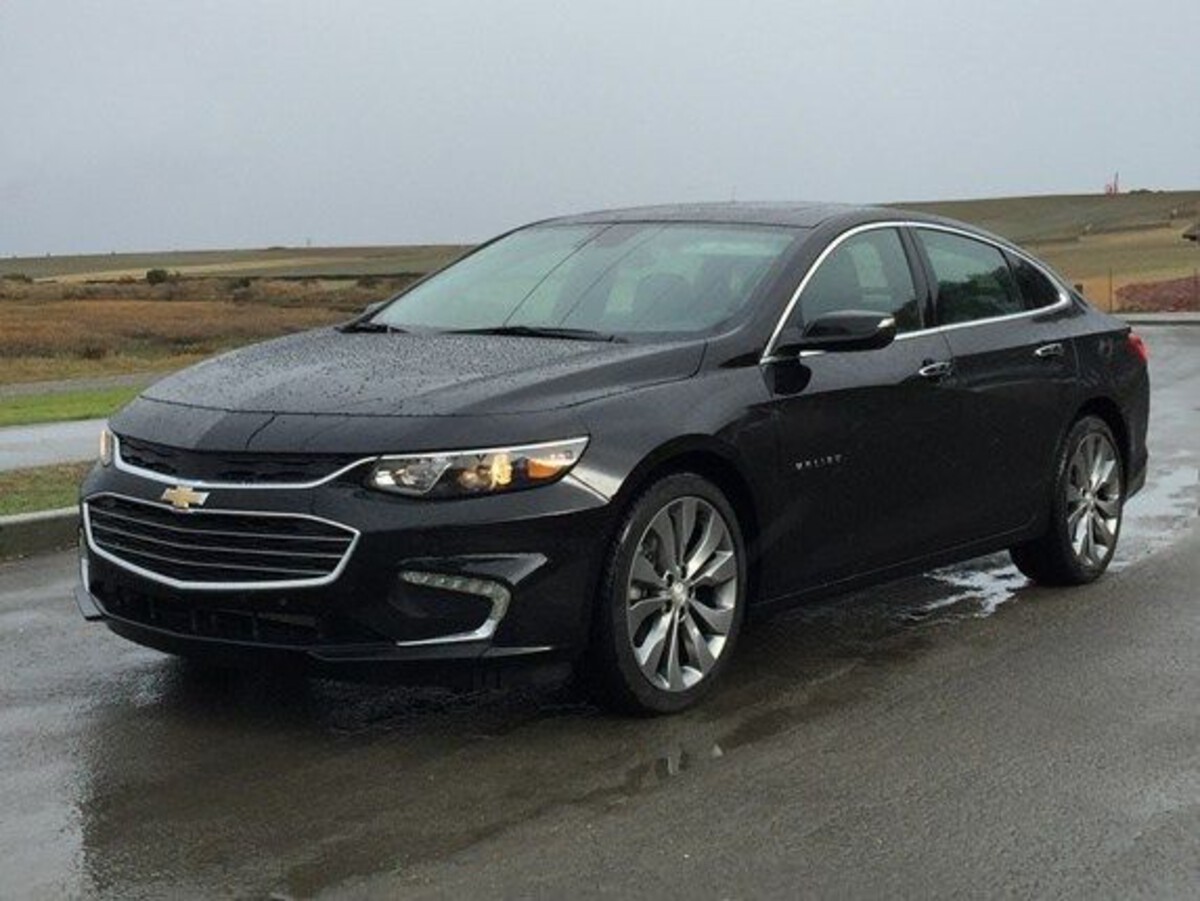
4. Chevrolet Malibu (Earlier Generations)
The Chevrolet Malibu, particularly those produced in the late 2000s through the early 2010s, has a mixed legacy when it comes to durability, with many examples showing significant wear and mechanical issues after only a few years on the road.
For families seeking a sedan for a teen driver, the earlier Malibu models can be problematic due to their susceptibility to transmission failures, electrical glitches, and engine troubles. Teen drivers, who may accelerate aggressively or neglect routine maintenance, tend to expose these weaknesses sooner, leading to breakdowns that can be both expensive and inconvenient.
The interior quality of the earlier Malibu also leaves much to be desired. The materials used tend to degrade quickly, with frequent complaints about seats losing their firmness, door panels loosening, and dashboard surfaces cracking or peeling.
For teen drivers who are less likely to treat their cars gently, this results in an interior that looks worn and tired far earlier than expected, reducing the vehicle’s comfort and overall value. The ride and handling characteristics of these models are another concern. The suspension setup can feel harsh and unforgiving, making it harder for inexperienced drivers to maintain smooth control. This can encourage rougher driving behavior that only hastens wear on critical components like shocks and struts.
From a safety standpoint, the early Malibus offered adequate protection for their time but lacked many of the modern driver aids that help prevent accidents and limit vehicle damage. The combination of mechanical, electrical, and interior durability issues means that the Chevrolet Malibu often struggles to survive the ups and downs of teen driving.
Families should be cautious and consider newer models or alternative sedans if durability and reliability are high priorities, as these early Malibus may result in frequent repairs and a poor ownership experience.
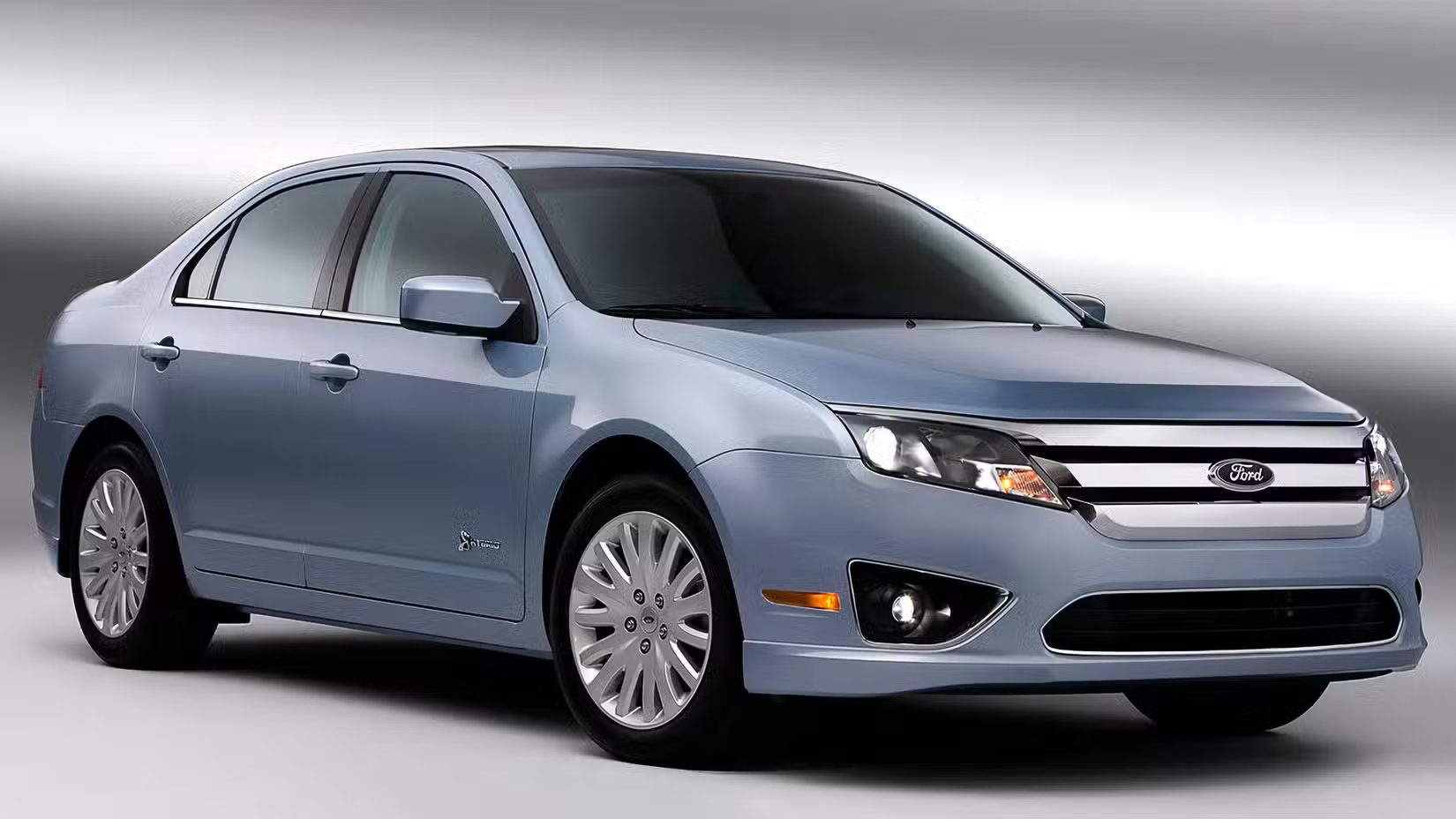
5. Ford Fusion (Early Models)
The early Ford Fusion models, spanning roughly from the late 2000s to the early 2010s, have been dogged by a series of reliability concerns that make them less than ideal for teen drivers. The Fusion has been particularly criticized for its transmission issues, including shuddering, slipping, and outright failure of both automatic and CVT transmissions in certain model years.
Teen drivers, who are often still developing smooth driving habits, can unintentionally exacerbate these problems through hard acceleration, rough gear changes, and inconsistent braking. The resulting mechanical failures are not only costly to fix but can also leave drivers stranded unexpectedly, causing safety risks and frustration.
Beyond the transmission, the Fusion’s engine and electrical systems have shown vulnerabilities. Complaints of engine hesitation, stalling, and sensor malfunctions are common, further undermining confidence in the vehicle’s reliability. The interior quality of early Fusion models also fails to stand up well under the rigors of teenage ownership.
Seats wear out quickly, plastic trim becomes brittle and cracks, and the infotainment and electronic systems tend to experience frequent glitches. This array of issues makes the driving experience less enjoyable and more stressful, especially for novice drivers still getting comfortable behind the wheel.
The Fusion’s handling characteristics, while adequate for experienced drivers, are less forgiving for teens. The vehicle’s weight and suspension tuning can make it challenging for new drivers to master smooth control, often resulting in abrupt maneuvers that increase wear on the car’s components.
While safety features were competitive for the era, they lack the advanced assistive technologies that modern cars offer, which help reduce accidents and vehicle damage. Taken together, these factors position the early Ford Fusion as a sedan that struggles under the demands of teen driving, with frequent repairs and a declining driving experience that can discourage new drivers and frustrate families.
Also Read: 5 Engine Swaps That Extend Life and 5 That End It
Navigating the complex landscape of selecting a suitable sedan for a teen driver is no small feat. As this article has explored, the challenges of teenage driving impose unique stresses that can quickly expose a vehicle’s strengths or weaknesses.
The choice of a first car extends beyond surface-level factors such as style or price and delves deeply into the durability, safety, and reliability that ultimately dictate how well a vehicle survives under the demanding conditions typical of new drivers. The five sedans we identified as survivors reassure families that these cars can endure the learning curve and mishaps that inevitably accompany teen drivers, while the five that tend to fall apart serve as cautionary examples of models better avoided if durability is a priority.
One of the overarching lessons from this exploration is the critical importance of mechanical robustness in a teen driver’s vehicle. Sedans like the Toyota Camry, Honda Accord, and Subaru Legacy stand out not just for their immediate appeal but because they possess powertrains and chassis engineered to last under stress.
These vehicles demonstrate resilience against the jolts, sudden stops, and occasional careless handling typical of teenage drivers. Their reliable engines and transmissions reduce the risk of unexpected failures, which not only saves families from costly repairs but also keeps new drivers safe by minimizing breakdowns in potentially dangerous situations.
Interior durability is another crucial factor that separates the winners from the losers in this arena. Teen drivers are prone to accidental spills, dropped objects, and less-than-careful treatment of the vehicle’s interior surfaces.
Cars with high-quality, durable materials in their cabins maintain their appearance and comfort longer, which contributes to a better driving experience and preserves resale value. Models like the Hyundai Sonata and Mazda6, which blend stylish yet tough interior finishes, exemplify how durability need not come at the expense of aesthetics or comfort.
Safety technology also plays a pivotal role in ensuring a vehicle can survive teenage ownership. Advanced driver assistance systems such as adaptive cruise control, automatic emergency braking, and lane-keeping assist act as crucial safeguards that prevent accidents and reduce vehicle damage.
Cars equipped with these features provide an added margin of safety for novice drivers who are still developing hazard perception and response skills. The models we identified as durable tend to have more comprehensive safety suites, underscoring the importance of modern technology in preserving both lives and vehicles.
Conversely, the sedans that fall apart under stress—such as the Fiat Tipo, Chrysler 200, and older Nissan Altima models—highlight the pitfalls of poor build quality, mechanical fragility, and lack of advanced safety features.
These vehicles often require frequent and costly repairs, suffer from interior wear, and may lack the technological aids necessary to compensate for a teen’s inexperience. Selecting these models risks not only financial strain but also increased safety concerns, as mechanical or electronic failures can lead to dangerous situations on the road.
For parents and guardians, this knowledge serves as a powerful tool in making informed decisions that balance cost, safety, and durability. Investing in a sedan known to survive the rigors of teenage driving translates into fewer headaches, safer journeys, and potentially lower overall ownership costs. It’s a reminder that while initial purchase price is important, the long-term reliability and resilience of the vehicle carry equal—if not greater—weight.
Additionally, this analysis encourages families to consider regular maintenance and proper education alongside their vehicle choice. Even the most durable sedans require timely servicing and responsible use to maximize their lifespan. Teaching teens about the importance of gentle driving, routine upkeep, and respecting their vehicle can further enhance the survival prospects of any car they drive.
In summary, selecting a sedan for a teen driver is a multifaceted decision that demands attention to more than just looks or price tags. Prioritizing durability, reliability, and safety ensures that the vehicle can withstand the inevitable stresses of new drivers and remain a dependable companion through the early years of driving.
Whether opting for a time-tested favorite like the Toyota Camry or exploring modern contenders like the Hyundai Sonata, families can find peace of mind in vehicles proven to endure. Conversely, steering clear of known weak links protects both budgets and safety. Ultimately, the right sedan for a teen driver supports not just their journey on the road, but their growth into responsible, confident motorists.
